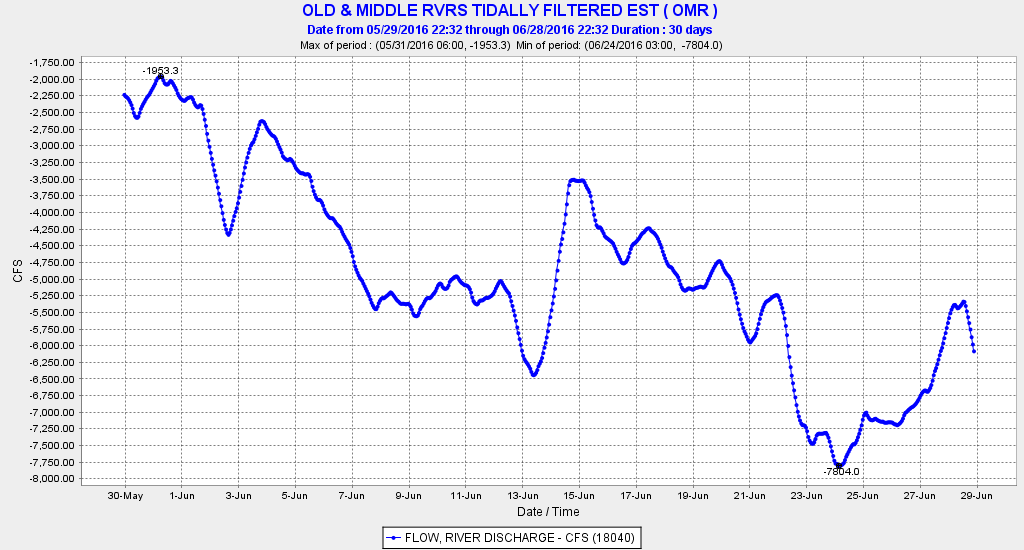In a May post and again in an early June post, I offered some hope for Delta smelt. But the Smelt Biological Opinion and the Smelt Working Group failed the smelt once again. The only protection afforded Delta smelt in June is the -5000 cfs Old-Middle River negative flow limit, which has the practical effect of limiting Delta exports to about 5000-6000 cfs. Historically (from 1978-1994), D-1485 water quality standards limited June exports to 6000 cfs in order to protect Delta fish, but there are no June export limits in the existing D-1641 standards.
The last Smelt Working Group meeting was May 31. The only biological opinion criterion left to manage, the -5000 cfs OMR limit, was gone because of a little known trigger in the opinion that dropped the OMR limit when the water temperature in the South Delta first reaches 25°C or 77°F (Figure 1). The reasoning behind this trigger in the biological opinion was that exports would no longer hurt smelt because 25°C/77°F water temperatures would kill them anyway. The problem with this logic is that exports can still pull smelt from their cooler nursery in the west and north Delta (Figures 2 and 3) into warm water killing zone in the central and south Delta. Fortunately, export pumping in June 2016 was limited (Figure 4) by Reclamation’s holding back Shasta Reservoir storage releases to conserve cold-water for salmon. Otherwise June exports and negative OMR flow would likely have been higher.
Reclamation has begun consulting with fishery agencies on a new biological opinion. We can only hope that they improve protections for smelt and other Delta fish in spring and summer. I suggest strong OMR restrictions any time the Delta Cross Channel in the far north Delta is closed, as this will help minimize (1) the draw of smelt from their nursery area and (2) the degradation of the Low Salinity Zone by south Delta exports.




